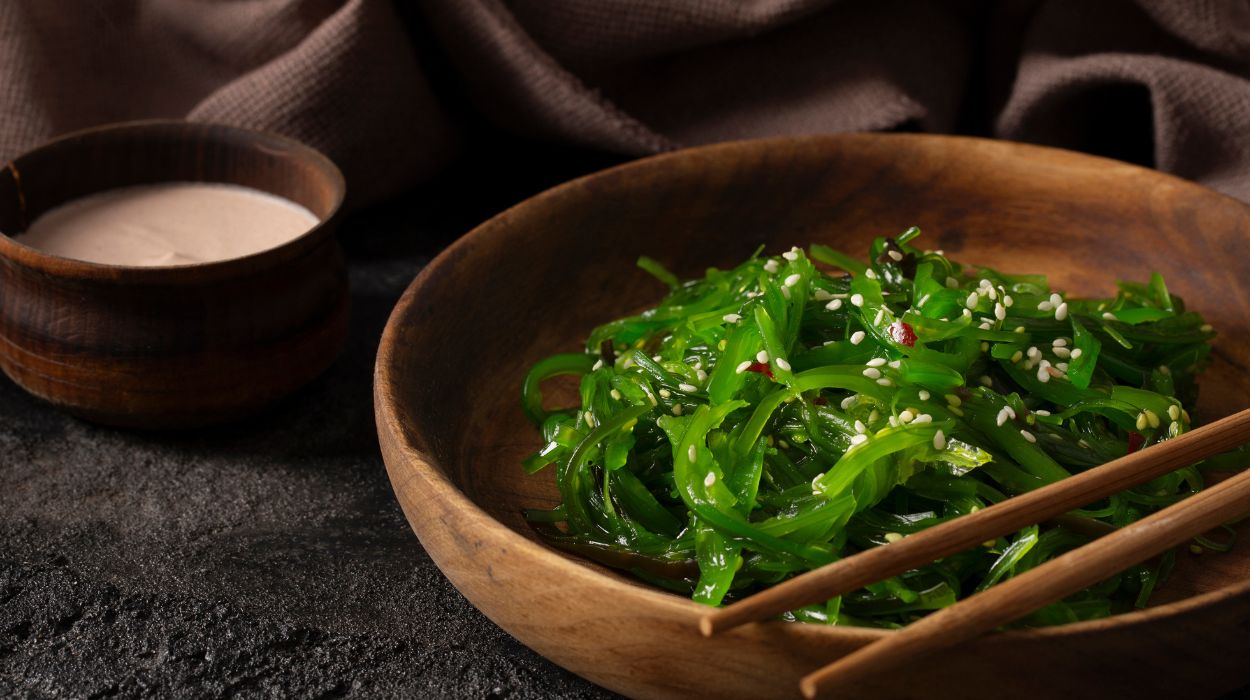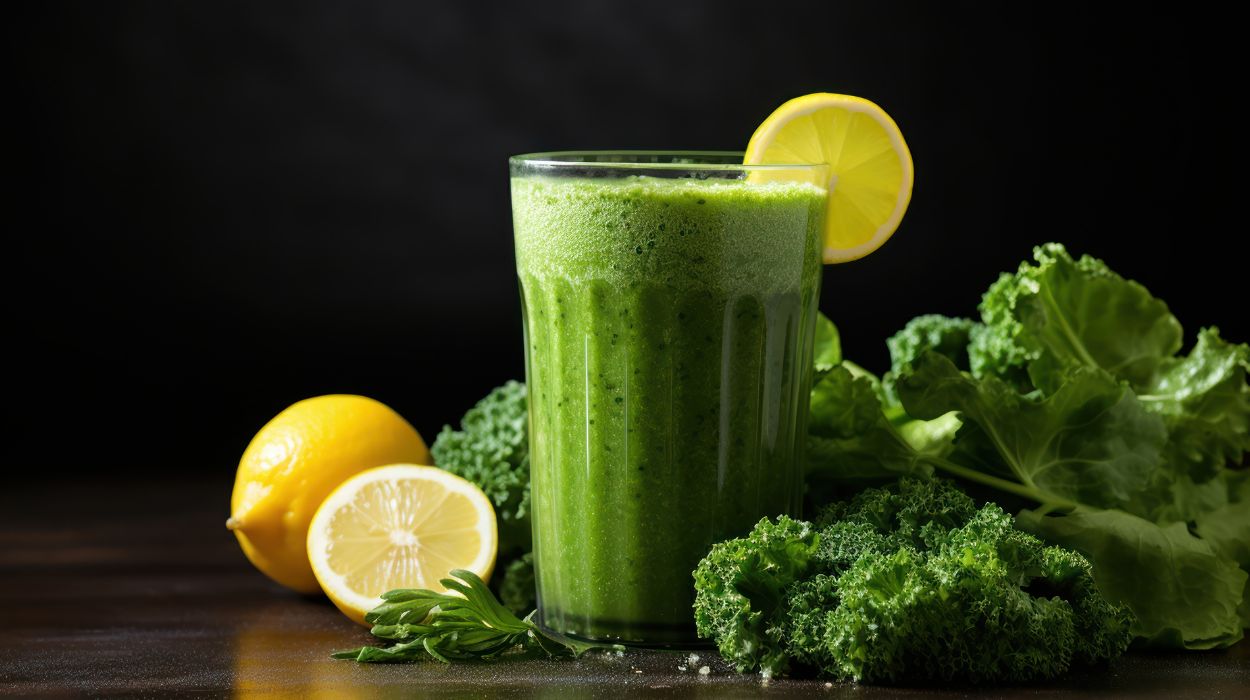 Evidence Based
Evidence Based
Evidence Based
This article is objectively based on relevant scientific literature, written by experienced medical writers, and fact-checked by a team of degreed medical experts.
Our team of registered dietitian nutritionists and licensed medical professionals seek to remain objective and unbiased while preserving the integrity of any scientific debate.
The articles contain evidence-based references from approved scientific sites. The numbers* in parentheses (*1,2,3) will take you to clickable links to our reputable sources.
Moringa Vs Kale 2024: A Battle Of New Superfood!

Gone are the days, when In the world of superfoods, kale’s established role as the go-to green superfood often overshadowed moringa (miracle tree). Moringa is gaining more and more attention and it is not wrong to say that this superfood could be the next kale.
The health claims for moringa powder sound way too good to be true. The nutrient-packed plant has become the next big super green of the decade and can be used as a powerful supplement.
Kale Vs Moringa
Similarities:
- Both kale and moringa offer a myriad of health benefits.
- Both are members of the botanical order Brassicales and both are popular on every brunch menu.
- Both offer at least 10% of the Daily Value (DV) for vitamin C, folate, riboflavin, calcium, magnesium, manganese, copper, vitamin B6, and vitamin A (in the form of carotenoids).
Differences:
- Nutrient composition varies; kale is particularly rich in vitamin K, while moringa excels in iron and calcium.
- Taste differs; kale has a strong, slightly bitter flavor, while moringa is milder.
- Availability may vary regionally.
You want a readily available, versatile leafy green with a robust nutrient profile, choose kale
You seek a potent nutritional supplement or have limited access to fresh greens, choose moringa.
Moringa Vs Kale
Kale and Moringa have a lot in common. Both have a very promising nutritional value. Let’s find out more about them.
| Kale | Moringa | |
| Nutrient Content | High in vitamin K, A, C, calcium, fiber | High in essential amino acids, iron, calcium, vitamin C, Quercetin |
| Health Benefits | Antioxidant, anti-inflammatory, supports bone health, immune system support | Weight loss promotion, antibacterial, anti-asthmatic, anti-diabetic, anti-viral, anti-inflammatory |
| Eye Health | Rich in Lutein and zeaxanthin | Beneficial for macular degeneration and cataracts |
| Blood Sugar | – | Chlorogenic acid helps moderate blood sugar levels |
| Water Purification | – | Seeds aid in purifying drinking water |
| Cancer Prevention | Contains glucosinolates with anti-cancer properties | Contains glucosinolates with anti-cancer properties |
Kale
Prepared using cauliflower, broccoli, and Brussel sprouts, Kale – a vegetable[1] with green or purple leaves is earning popularity amongst Europeans and Americans looking to get in shape. These can be boiled, steamed, or even eaten in the form of salads. Kale is also called borecole.
Power-packed with a plethora of nutrients[2] including calcium, vitamins, iron, potassium, copper to name a few – it is a rich source of plant protein that forms a hot favorite item in the menu of vegans and vegetarians.
Carotenoids and phytonutrients are found in abundance in Kale. These are known to boost the immune system, help with digestion and even protect from a few ailments.
Moringa
Another close companion of Kale is Moringa. Known globally by many other names—”the miracle tree,” “the never die,” “the drumstick tree,” “horseradish tree,” “mother’s best friend,” and “ben oil tree or benzolive tree”—Moringa oleifera, offers an abundance of nutritional and medicinal benefits[3], as per the anecdotal evidence and increasing scientific studies.
Moringa shares equal (if not more) status of being a known superfood[4]. It is known to be rich in Vitamins, potassium, calcium, phosphorus, and manganese. Moringa is known to contain 40 antioxidants compounds, 35 anti-inflammatory compounds, and 20 essential amino acids that are a rich source of proteins.
According to research[5], 3 separate flavonoids contained in Moringa are known to reduce risks of coronary ailments and certain types of cancer.
To understand how both fare against each other in terms of their impressive nutritional profile, let us compare the nutrients present in 100 grams of fresh, uncooked moringa/kale leaves.
The below chart provides both the actual amount and the Percent Daily Value (percent DV) for each nutrient.
| Kale | Moringa | |
| Protein | 9.4 g | 4 g |
| Fiber | 3.6 g (13 percent DV) | 2 g (7 percent DV) |
| Calcium | 150 mg (12 percent DV) | 185 mg (14 percent DV) |
| Iron | 1.47 mg (8 percent DV) | 4 mg (22 percent DV) |
| Magnesium | 47 mg (11 percent DV) | 42 mg (10 percent DV) |
| Potassium | 491 mg (10 percent DV) | 337 mg (7 percent DV) |
| Vitamin A | 500 RAE (56 percent DV) | 378 RAE (42 percent DV) |
| Vitamin C | 120 mg (133 percent DV) | 51.7 mg (57 percent DV) |
| Vitamin K | 705 mcg (587 percent DV) | – |
| Thiamin | 0.11 mg (9 percent DV) | 0.257 mg (21 percent DV) |
| Riboflavin | 0.13 mg (10 percent DV) | 0.66 mg (51 percent DV) |
| Niacin | 1 mg (6 percent DV) | 2.22 mg (14 percent DV) |
| Vitamin B6 | 0.271 mg (16 percent DV) | 1.2 mg (71 percent DV) |
| Folate (B9) | 141 mcg (35 percent DV) | 40 mcg (10 percent DV) |
It is evident from the table that Moringa[6] has twice the protein, thrice the iron, and almost six times vitamins to Kale[7]. In saying that, Kale has a slightly higher concentration of Vitamins and potassium.
Notably, both Moringa and Kale are packed with nutrition and have immense health benefits.
Kale has gained more popularity as a nutrient-dense green vegetable, but Moringa has the winning edge over kale. Moringa is known as an immensely powerful anti-inflammatory green food man has ever known. In addition, Moringa comes with many real benefits backed with scientific evidence.
Potential Health Benefits Of Moringa And Kale

Research suggests that moringa has multiple health benefits[8], a potent leafy green vegetable rich in essential amino acids and boasting remarkable nutritional value. It promotes weight loss in humans. Moringa benefits span from weight loss promotion to its anti-bacterial, anti-asthmatic, and anti-inflammatory effects. The powerful antioxidant – Quercetin present in moringa reduces blood pressure and fats in the body and the blood.
Leaf extracts of moringa are also helpful to relieve symptoms of rheumatoid arthritis by lowering fluid swelling, redness, and pain.
Chlorogenic acid (CGA) – a phenolic compound present in moringa helps moderate blood sugar levels in diabetic patients after meals. Moringa also possesses cholesterol-lowering effects, potentially reducing the risk of heart disease.
The moringa powder obtained from crushed seeds helps to purify drinking water since the proteins in moringa seeds aid in creating bacterial clumps that fall to the bottom and can be easily removed.
Kale, like moringa, contains heaps of nutrients and offers multiple health benefits[9]. It possesses exceptionally strong antioxidant properties that may help slow the progression of a wide range of age-related diseases as well as aging in general.
Kale contains Lutein and zeaxanthin[10] (types of organic pigments termed as carotenoids), nutrients that give kale its dark and deep green color and safeguard against macular degeneration (an eye disease that causes vision loss) and cataracts.
Calcium and phosphorus present in kale are crucial for healthy bone formation.
Kale is rich in fiber and water that supports a healthy digestive system and prevents constipation.
Other nutrients present in kale like – beta-carotene, vitamin C, and vitamin E support a healthy immune system.
What’s more, both moringa and kale contain glucosinolates (biologically active compounds with nutritional effects). Glucosinolates are sulfur-containing compounds that convert into isothiocyanates in the body. Isothiocyanates are powerful phytochemicals that are also called stress-response chemicals known for their anti-cancer properties, and this is the reason why kale and moringa are hailed as effective anti-cancer foods.
To sum up, both moringa and kale are powerful superfoods, rich in nutrients offering a multitude of health benefits
Adding Moringa Or Kale To Your Diet

One major difference between moringa and kale is that kale grows in cooler weather and moringa grows only in warm weather. So, fresh moringa leaves are not available in places where the climate is too cold. In such places. Moringa powder is easily available at health food stores. The powder can be used in smoothies and soups, added to coconut water, fresh apple juice, or orange juice, or stirred into dressings and sauces. Some people use moringa powder in making green “lattes”.
Kale (both fresh and frozen) is easily available in regular supermarkets if you want to use it in cooking. Kale powder is also available in health food stores for people who want to use it as supplements. You can have kale leafy greens by adding them in juices and smoothies, by baking kale leaves, and in the form of homemade kale chips.
Conclusion
Both kale and moringa boast significantly higher nutritional content across various categories compared to many other foods, earning them the esteemed title of ‘superfoods’. Kale, often regarded as the reigning champion of the super greens realm, has long been celebrated for its abundance of essential vitamins and minerals, including vitamin K, A, and C, as well as calcium and fiber. Additionally, kale’s rich antioxidant properties contribute to overall health, supporting functions such as immune system strength and healthy skin.
However, in recent years, the emergence of the ‘miracle tree’ Moringa oleifera has challenged kale’s supremacy, offering an even more potent and diverse nutritional profile. Moringa not only rivals kale in terms of essential vitamins and minerals but also stands out for its exceptional plant-based protein content, making it a valuable addition to vegetarian and vegan diets. Moreover, moringa has garnered attention for its purported medicinal benefits, with claims of over 300 potential health-promoting properties, ranging from anti-inflammatory and antibacterial effects to blood sugar regulation and cholesterol reduction.
+ 10 sources
Health Canal avoids using tertiary references. We have strict sourcing guidelines and rely on peer-reviewed studies, academic researches from medical associations and institutions. To ensure the accuracy of articles in Health Canal, you can read more about the editorial process here
- Critical Reviews in Food Science and Nutrition. (2019). Kale (Brassica oleracea var. acephala) as a superfood: Review of the scientific evidence behind the statement. [online] Available at: https://www.tandfonline.com/doi/abs/10.1080/10408398.2018.1454400
- Cogent Food & Agriculture. (2020). Kale: Review on nutritional composition, bio-active compounds, anti-nutritional factors, health beneficial properties and value-added products. [online] Available at: https://www.tandfonline.com/doi/full/10.1080/23311932.2020.1811048
- Islam, Z., Islam, S.M.R., Hossen, F., Mahtab-ul-Islam, K., Hasan, Md.R. and Karim, R. (2021). Moringa oleifera is a Prominent Source of Nutrients with Potential Health Benefits. International Journal of Food Science, [online] 2021, pp.1–11. Available at: https://www.ncbi.nlm.nih.gov/pmc/articles/PMC8373516/
- Arora, S. and Arora, S. (2021). Nutritional significance and therapeutic potential of Moringa oleifera : The wonder plant. Journal of Food Biochemistry, [online] 45(10). Available at: https://onlinelibrary.wiley.com/doi/abs/10.1111/jfbc.13933
- Makita, C., Chimuka, L., Steenkamp, P., Cukrowska, E. and Madala, E. (2016). Comparative analyses of flavonoid content in Moringa oleifera and Moringa ovalifolia with the aid of UHPLC-qTOF-MS fingerprinting. South African Journal of Botany, [online] 105, pp.116–122. Available at: https://www.sciencedirect.com/science/article/pii/S0254629916002507
- González-Burgos, E., Ureña-Vacas, I., Sánchez, M. and Gómez-Serranillos, M.P. (2021). Nutritional Value of Moringa oleifera Lam. Leaf Powder Extracts and Their Neuroprotective Effects via Antioxidative and Mitochondrial Regulation. Nutrients, [online] 13(7), p.2203. Available at: https://www.mdpi.com/2072-6643/13/7/2203/htm
- Neela Satheesh and Solomon Workneh Fanta (2020). Kale: Review on nutritional composition, bio- active compounds, anti-nutritional factors, health… [online] ResearchGate. Available at: https://www.researchgate.net/publication/343905740_Kale_Review_on_nutritional_composition_bio-_active_compounds_anti-nutritional_factors_health_beneficial_properties_and_value-added_products_Kale_Review_on_nutritional_composition_bio-_active_compounds
- Abdull Razis, A.F., Ibrahim, M.D. and Kntayya, S.B. (2014). Health Benefits of Moringa oleifera. Asian Pacific Journal of Cancer Prevention, [online] 15(20), pp.8571–8576. Available at: https://pubmed.ncbi.nlm.nih.gov/25374169/
- Šamec, D., Urlić, B. and Salopek-Sondi, B. (2018). Kale (Brassica oleracea var. acephala) as a superfood: Review of the scientific evidence behind the statement. Critical Reviews in Food Science and Nutrition, [online] 59(15), pp.2411–2422. Available at: https://pubmed.ncbi.nlm.nih.gov/29557674/
- Becerra-Moreno, Alanís-Garza, Mora-Nieves and Daniel Alberto Jacobo-Velázquez (2014). Kale: An excellent source of vitamin C, pro-vitamin A, lutein and glucosinolates. [online] ResearchGate. Available at: https://www.researchgate.net/publication/263429788_Kale_An_excellent_source_of_vitamin_C_pro-vitamin_A_lutein_and_glucosinolates



